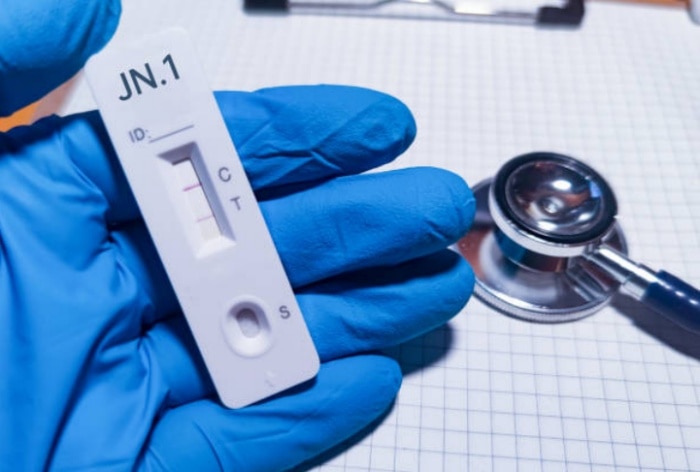As many as 1,200 cases of COVID-19 sub-variant JN.1 have been detected in 17 states and Union territories across India with Nagaland becoming the latest state to join the fray.

COVID-19 Update: India has recorded a total of 1,200 cases of COVID-19 sub-variant JN.1 so far across 17 states and Union territories with Nagaland becoming the latest state to report a JN.1 infection, the INSACOG said on Saturday.
As per data compiled by the Indian SARS-CoV-2 Genomics Consortium (INSACOG), Karnataka tops the list for the highest number of JN.1 cases at 215, followed by Andhra Pradesh (189), Maharashtra (170), Kerala (154), West Bengal (96), Goa (90), Tamil Nadu (88) and Gujarat (76).
Telangana and Rajasthan have recorded 32 JN.1 cases each, Chhattisgarh has recorded 25, Delhi 16, Uttar Pradesh 7, Haryana five, Odisha three, and Uttarakhand and Nagaland one each, according to the data accessed by news agency PTI.
No need to panic, say officials
Even though there has been an uptick in the number of JN.1 cases in the country, officials and experts have maintained the new variant does not pose any serious health risk and urged the public not to panic.
“Even though the number of cases is rising and the JN.1 sub-variant has been detected in the country, there is no cause of immediate concern as the majority of those infected are opting for home-based treatment, indicating mild illness,” officials said.
States have been urged to ensure effective compliance of the detailed operational guidelines for revised surveillance strategy for COVID-19 shared by the Union Ministry of Health and Family Welfare.
“The currently available data suggests that the JN.1 sub-variant is neither leading to an exponential rise in the new cases nor a surge in the hospitalisation and mortality,” said an official.
The Centre has asked the states and Union territories to maintain a constant vigil amid an uptick in the number of Covid cases and the detection of the JN.1 sub-variant in the country.
The states have been urged to ensure effective compliance of the detailed operational guidelines for the revised surveillance strategy for COVID-19 shared with them by the Union Ministry of Health and Family Welfare.
The states have also been asked to regularly monitor and report district-wise cases of influenza-like illness (ILI) and severe acute respiratory illness (SARI) from all health facilities for an early detection of a rising trend of Covid cases.
JN.1 sub-variant
The World Health Organisation has classified JN.1 as a separate “variant of interest” given its rapidly-increasing spread, but said it poses a “low” global public health risk.
The JN.1 sub-variant of the coronavirus was previously classified as a variant of interest (VOI) as part of the BA.2.86 sub-lineages, the parent lineage that is classified as a VOI, the world body said.
Several countries, including China, Indonesia, the Philippines, Malaysia and Singapore, have reported upticks in new coronavirus cases. The JN.1 strain, first detected in September in the United States, is a descendant of BA.2.86, a highly mutated variant of the Omicron strain of COVID-19.
(With inputs from agencies)

